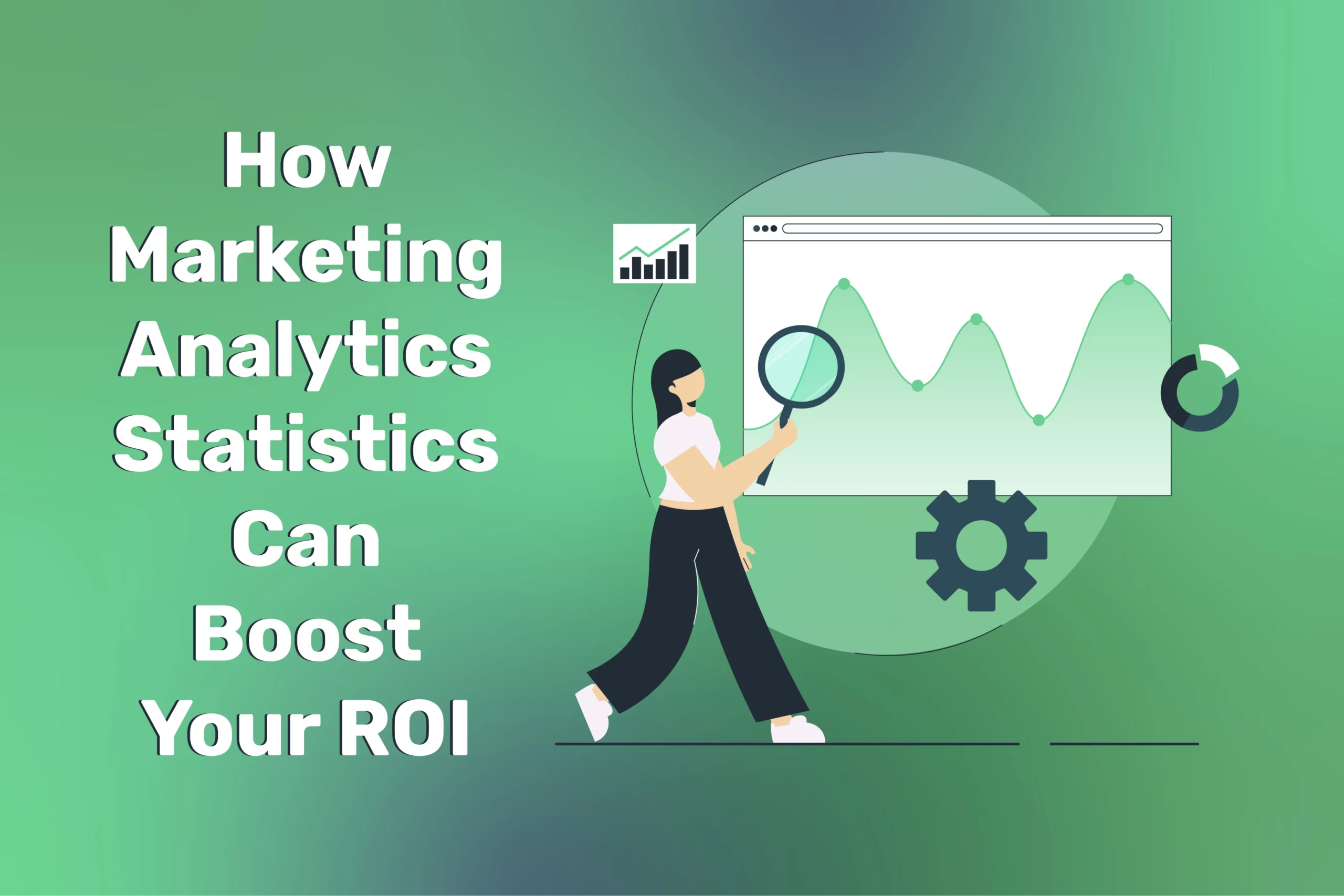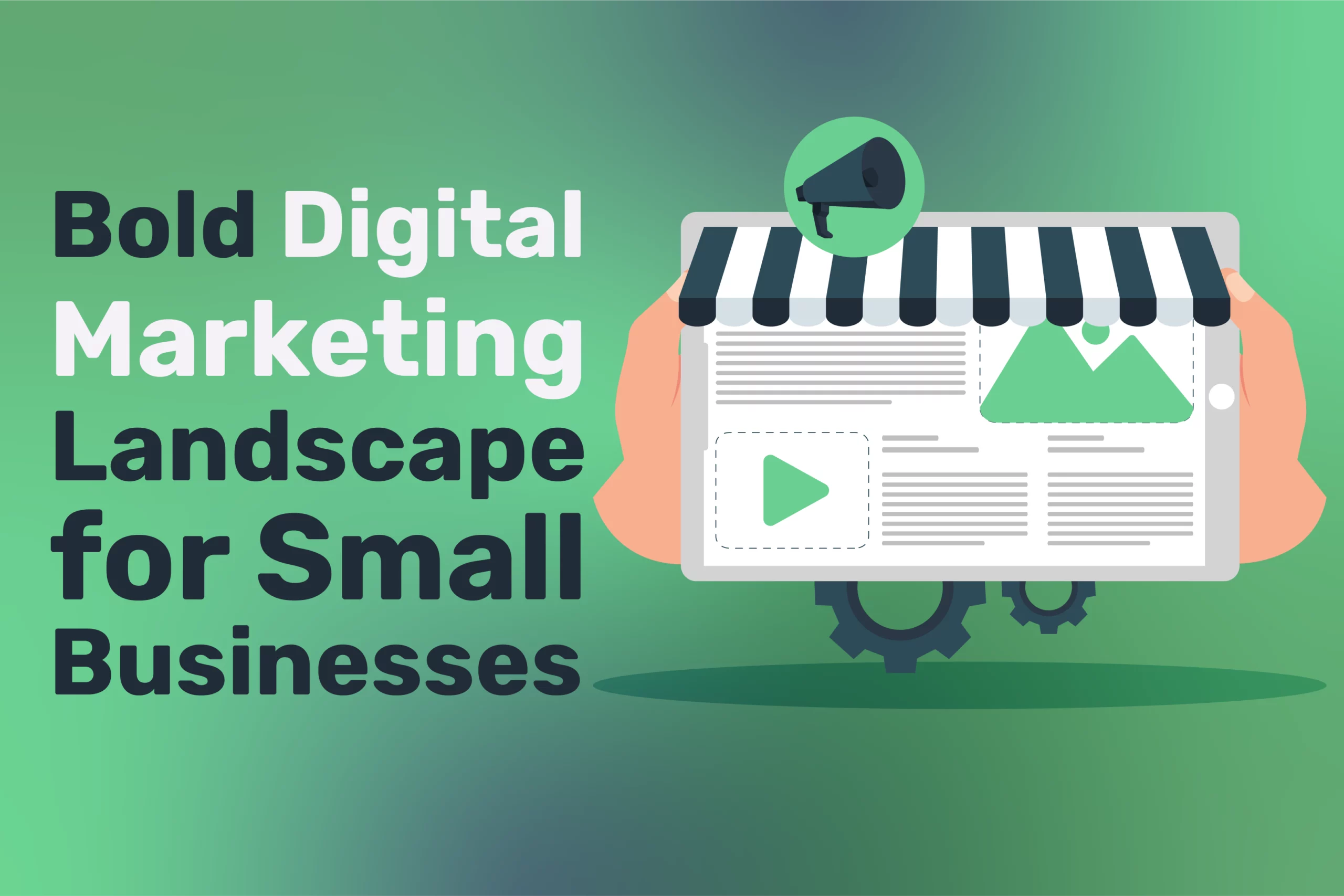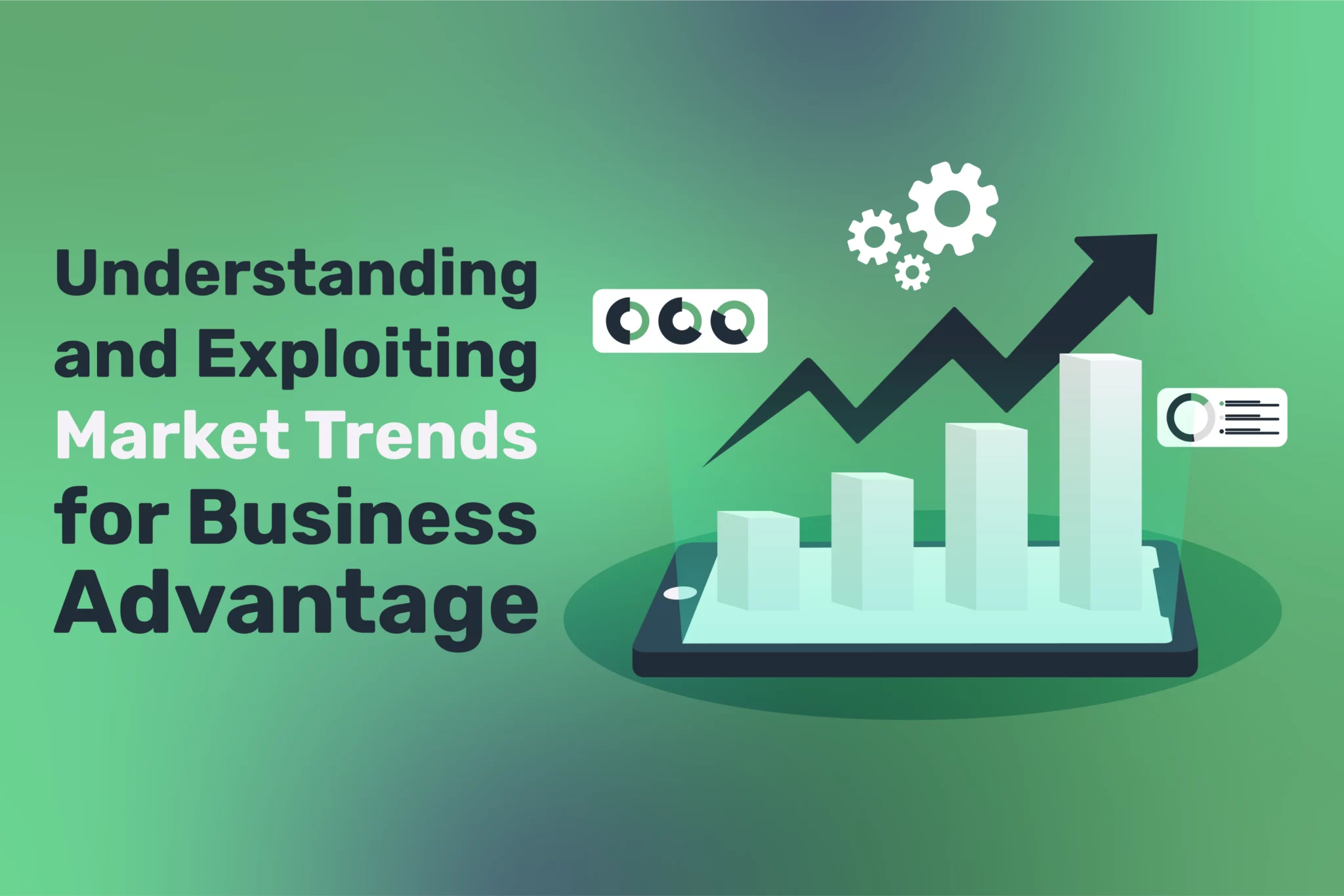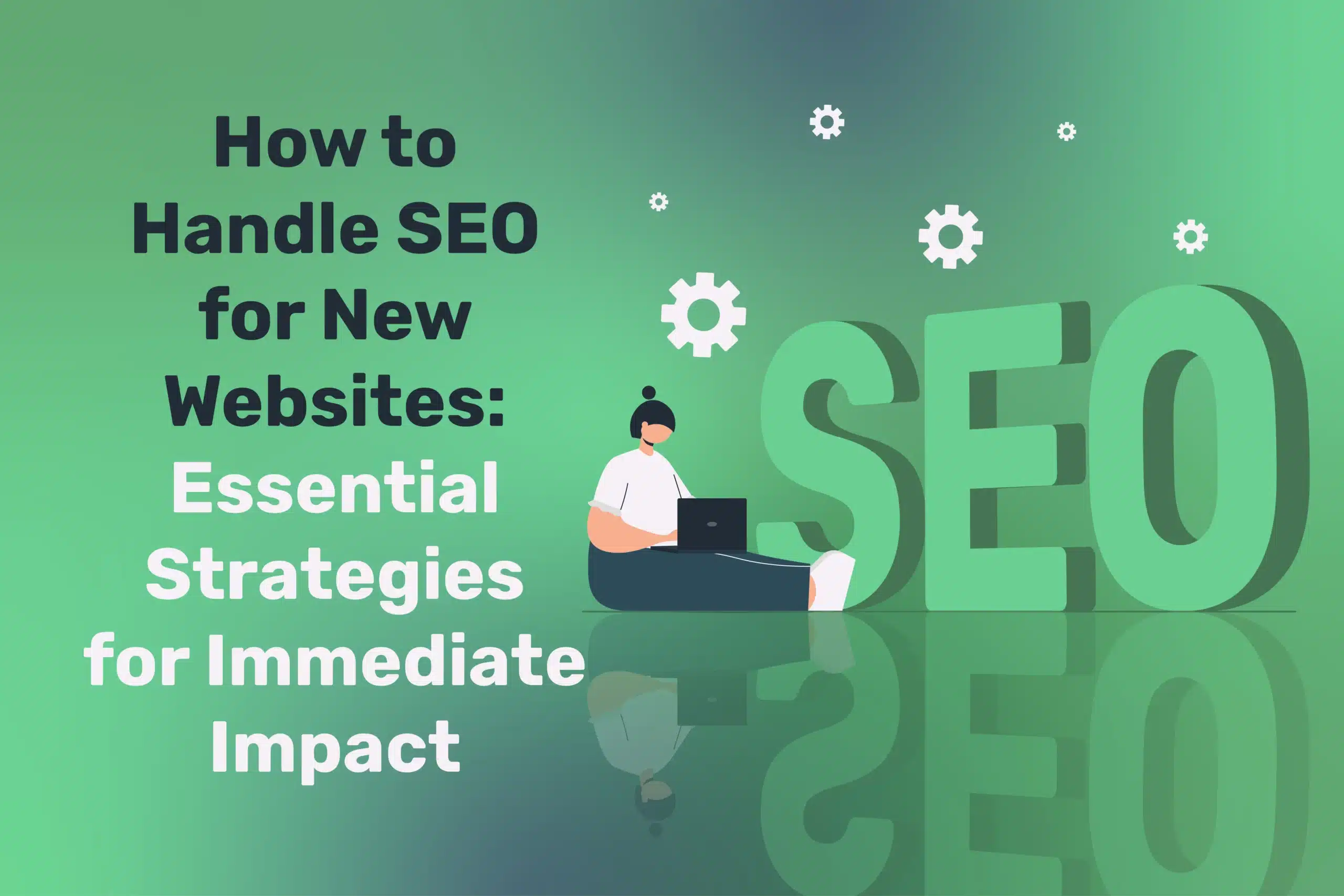
50 Best Empowering SEO Stats Every Irish Marketer Should Know
Table of Contents
SEO Stats Every Irish Marketer Should Know Search engine optimisation (SEO) is a dynamic field, and methods that once propelled sites to the top of search results may now be outdated. Staying ahead requires continuous adaptation as search algorithms evolve and user preferences shift. In 2025, this is especially true for Irish marketers who face ever-increasing online competition and changing consumer behaviour patterns.
In today’s landscape, data-driven insights are more critical than guesswork. Whether you aim to capture attention in local Irish markets or expand into broader EU circles, the nuances of technical optimisation, content ideation, and user engagement should all be informed by reliable statistics. This targeted approach helps ensure that each marketing effort resonates effectively and aligns with current search engine priorities.
This article presents a curated selection of key SEO stats with global, European, and specifically Irish relevance. Each statistic is paired with a takeaway, helping refine your content strategy, technical frameworks, and overall digital presence. By leveraging these data points, Irish marketers can make grounded decisions that boost visibility, adapt to ever-changing SEO best practices, and stay competitive in a fast-moving digital world.
“Credible stats arm Irish marketers with clarity. Rather than guess, let the data shape your next SEO sprint,” says Ciaran Connolly, Director of ProfileTree.
Global and European SEO Stats Overview
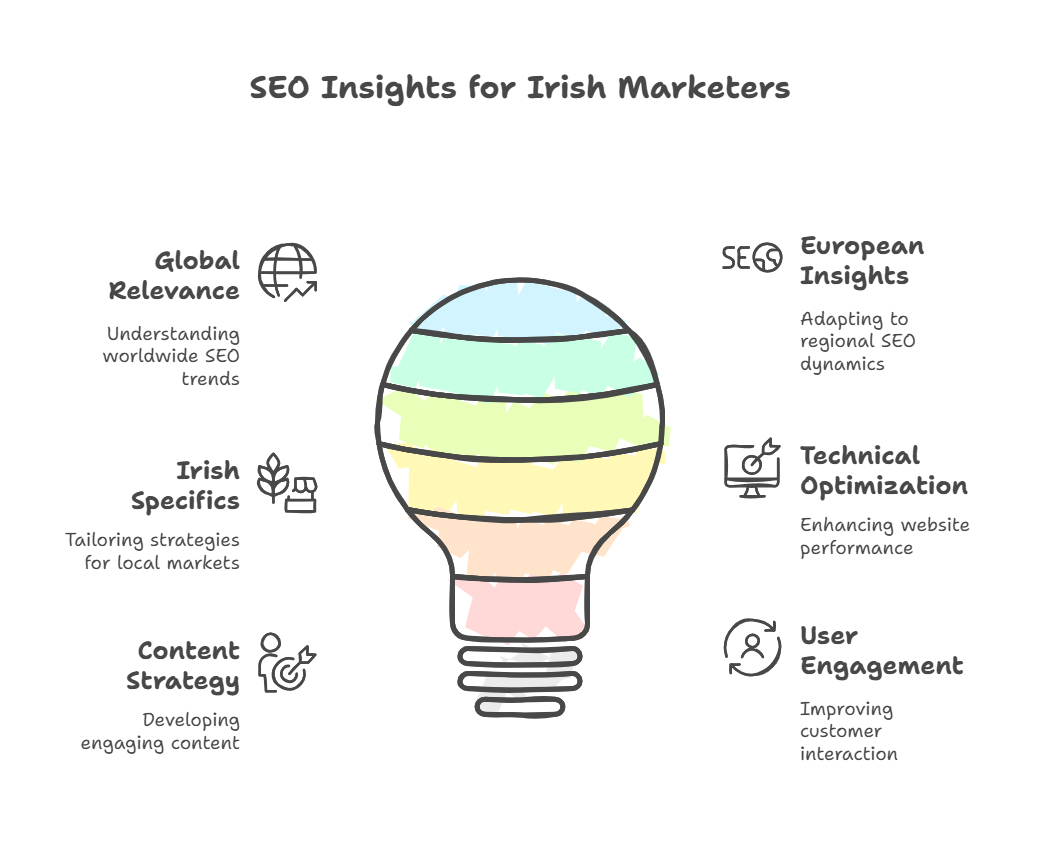
- Around 60% of global internet traffic reportedly comes from organic search, surpassing direct or paid channels. This underscores the primacy of organic visibility for brand discovery.
- Approximately 92% of online experiences begin with a search engine, mainly Google. Bing usage is slowly rising but remains modest in Ireland (around 4%).
- A 2024 EU Commission study reveals that 46% of European SMEs consider SEO a “core marketing priority,” indicating that more businesses heavily invest in SEO.
- Organic click-through rates for positions 1–3 collectively hover near 55% on desktop SERPs. On mobile, position one can slightly exceed a 28% share.
- Featured snippets appear in about 12% of EU-based queries and roughly 15% of queries from Irish users.
- Voice search accounts for about 20% of mobile searches across the EU, close to 18% in Ireland—especially in younger demographics.
- Mobile usage accounts for roughly 68% of all site visits globally; it’s about 65% in Ireland.
- Long-tail queries—like “best coffee beans in Cork”—make up 70% of total web searches, capturing highly engaged audiences.
- Technical SEO improvements (e.g., faster site speed, schema markup) often boost search rankings by 15–20%.
- SERP features (local packs, image carousels, knowledge panels) appear in about 45% of Irish searches related to local services or events.
Ireland-Specific SEO Stats Patterns
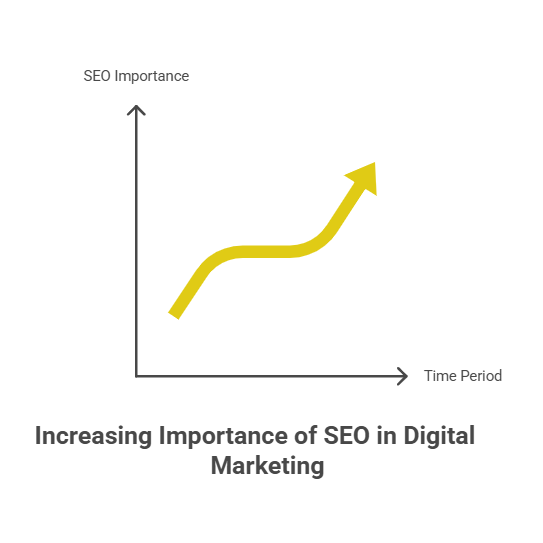
- About 77% of Irish consumers research local businesses online weekly, and 56% do so daily, highlighting the importance of a strong local SEO strategy.
- Among Irish SMEs, 39% say that “ranking on Google’s first page” is their top digital priority for 2025.
- Around 80% of Irish e-commerce retailers cite organic traffic as their top-funnel source—beating paid ads or social referrals.
- The top search categories in Ireland (besides news and social) include travel/hospitality, retail (fashion, electronics), and personal finance.
- Roughly 70% of Irish online shoppers check multiple sites or read at least three reviews before purchasing, emphasising the value of user-generated content.
- Dublin-based businesses see up to 30% higher search volume for local queries than other counties.
- Ireland’s SEO spending among mid-sized companies rose by 25% in 2024, with a projected 15% increase in 2025.
- Gaelic content searches represent a niche market but show modest annual growth of about 5%.
- Around 72% of Irish marketers find it challenging to meet Core Web Vitals thresholds, particularly LCP for image-heavy sites.
- While direct correlation to rankings is debated, businesses with high social brand mentions in Ireland see an estimated 10–12% higher organic brand CTR.
Content and Keyword Trends
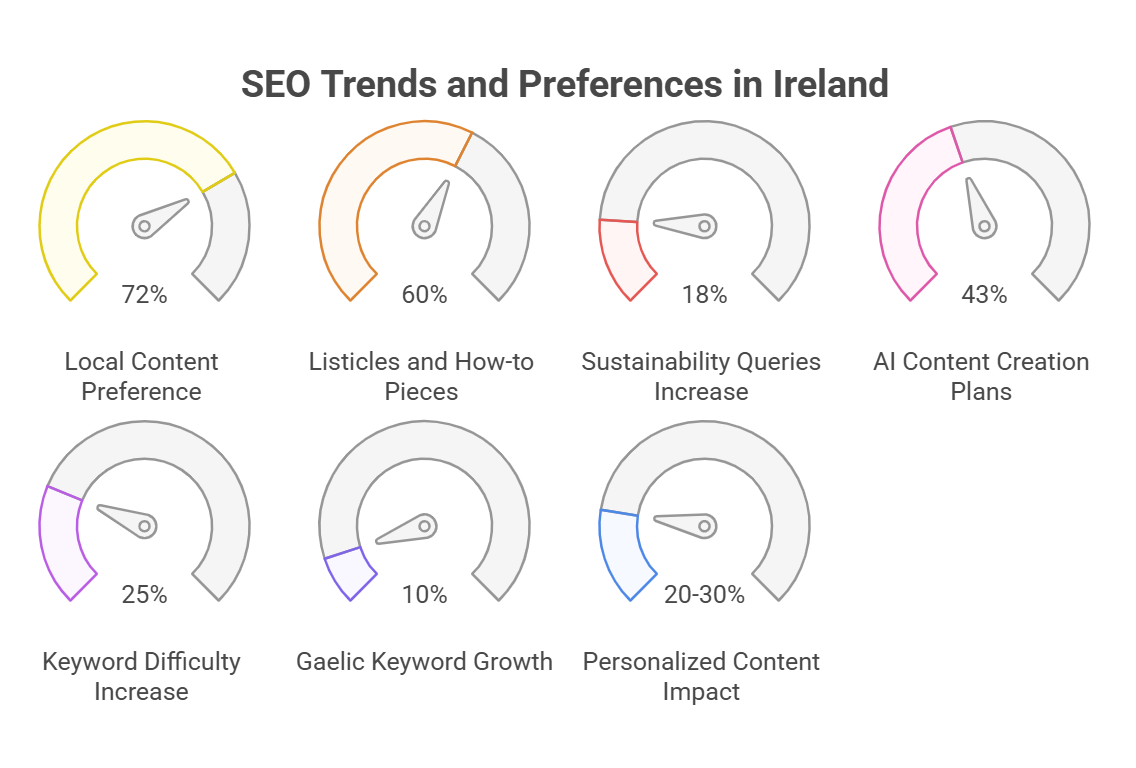
- About 72% of Irish online users prefer content with local references or examples, underlining the importance of Irish-specific copy.
- Listicles and “How-to” pieces remain the top-performing blog formats, driving roughly 60% of organic blog traffic.
- Keyword research from 2024 indicates an 18% jump in queries about “sustainability” or “eco-friendly” solutions in Ireland.
- Posts between 700 and 1,200 words tend to hit the sweet spot for Irish audiences, though longer guides of 2,000 words or more see higher dwell time.
- Infographics or short data visuals are particularly popular in Ireland, delivering 2–3 times more shares than text-only articles.
- An estimated 43% of Irish marketers plan to use AI-driven content creation for blog outlines or first drafts by 2025, double the rate in 2023.
- Keyword difficulty for popular city-based queries, such as “things to do in Cork,” climbed by about 25% from 2023 to 2024.
- Users frequently append “2025” or “current year” to search terms for updated content, signalling a preference for freshness.
- Gaelic keywords show about a 10% year-on-year increase in search volume, still a stinymargin overall but rising steadily.
- Personalised content can boost average session duration by 20–30%, indicating modern SEO increasingly intersects with user engagement.
Technical and Performance SEO Stats
- Core Web Vitals compliance among Irish websites stood at around 40% in mid-2024, leaving most sites below Google’s recommended thresholds.
- Each second above a 3s load time can reduce conversions by about 12%.
- HTTPS usage is nearly 88% among Ireland’s top sites, almost universal among e-commerce or finance brands.
- Although schema markup usage is only used by around 25% of Irish business sites, those that employ it often see a 20–30% CTR boost in SERPs.
- Roughly 95% of Irish websites now run under mobile-first indexing.
- Accelerated Mobile Pages (AMP) has waned globally, around 15% of Irish news sites still rely on them for speed.
- Reorganising site architecture—for example, improving internal linking—can yield an estimated 10–15% bump in visibility.
- The average bounce rate for Irish B2C sites is approximately 45%; better above-the-fold CTAs or engaging headlines can reduce that by up to 10%.
- Simple image compression measures can slash load times by 20–40% for media-heavy Irish sites.
- Hosting your site in Ireland or the UK often helps achieve better time-to-first-byte (TTFB) for local visitors.
Linking and Off-Page SEO stats
- Backlinks remain a pivotal ranking signal, with 78% of Irish marketers deeming link-building “essential” or “important.”
- Over 80% of local businesses in the top local pack have consistent NAP (Name, Address, Phone) data across at least five significant.
- PR campaigns can provide a 30% higher return on investment in backlinks than standard link outreach.
- Although direct correlation is debated, active social engagement often elevates brand-keyword searches by around 25%.
- About 40% of Irish marketers highlight the importance of E-A-T (Expertise, Authoritativeness, Trust) for attracting high-quality editorial links.
- Local .ie domains can provide a slight edge for Irish queries, even though 30% of Irish businesses still opt for .com.
- Google’s link spam updates typically penalise 5–10% of Irish SME sites each year, often hitting those resorting to low-quality link schemes.
- Partnerships or brand collaborations are a link source for 35% of Irish SMEs, focusing on events or content-sharing to earn natural backlinks.
- About a quarter of Irish marketers leverage influencer marketing—such as offering product samples—to secure mentions and backlinks.
- Local link-building agency services generally cost around €500–€2,000 monthly, and many SMEs correlate their consistent investments in link-building with ranking improvements in competitive queries.
AI and Future SEO Innovations
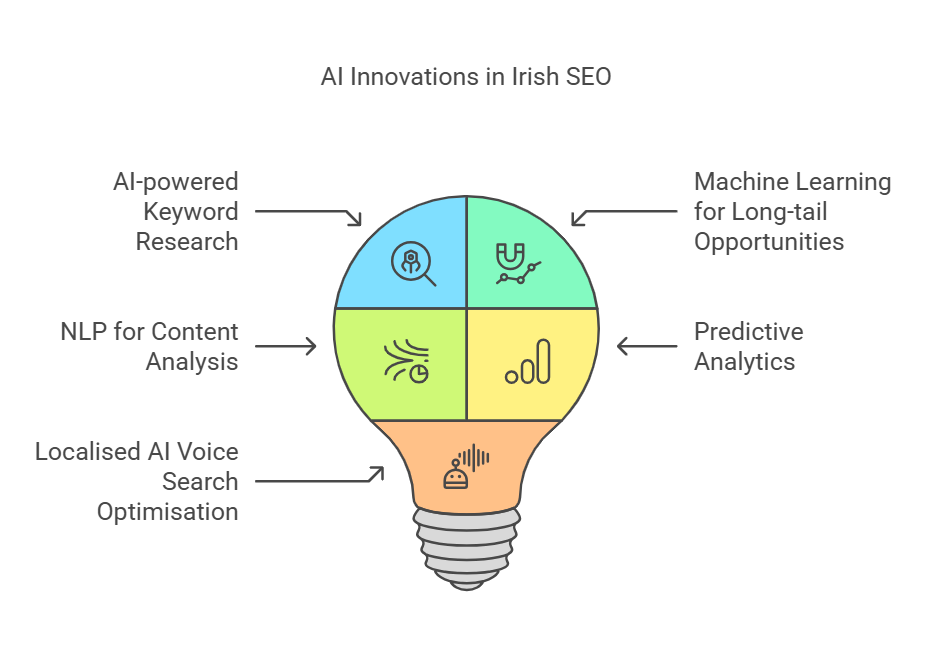
- AI-powered keyword research tools can reduce manual workflow time by up to 40%, enabling Irish marketers to focus more on high-level strategies.
- Machine learning tools that analyse user behaviour often reveal “hidden” long-tail opportunities—especially for hyper-local niches within Ireland.
- Natural language processing (NLP) algorithms enable advanced content analysis, helping brands detect gaps in topical coverage and enhance E-A-T.
- Predictive analytics can help marketers anticipate ranking shifts by cross-referencing competitor data, SERP volatility, and emerging trends.
- Localised AI voice search optimisation holds growing potential in Ireland, aligning with the increased adoption of smart home devices and voice assistants.
Sustainability and Ethical Marketing
- Around 65% of Irish consumers report that a brand’s ethical or environmental track record influences their purchase decisions online.
- Websites that outline sustainable practices or commitments see an average of 10–15% longer on-page dwell time from socially conscious demographics.
- Approximately 40% of Irish SMEs are integrating environmental or social impact statements into their content strategy to attract values-driven customers.
- Marketers collaborating with environmental or community-focused organisations can gain authoritative backlinks while resonating with local audiences.
- Search engines increasingly factor transparency and trust signals into their algorithms, making ethical marketing a competitive differentiator.
Video SEO and Multimedia Growth
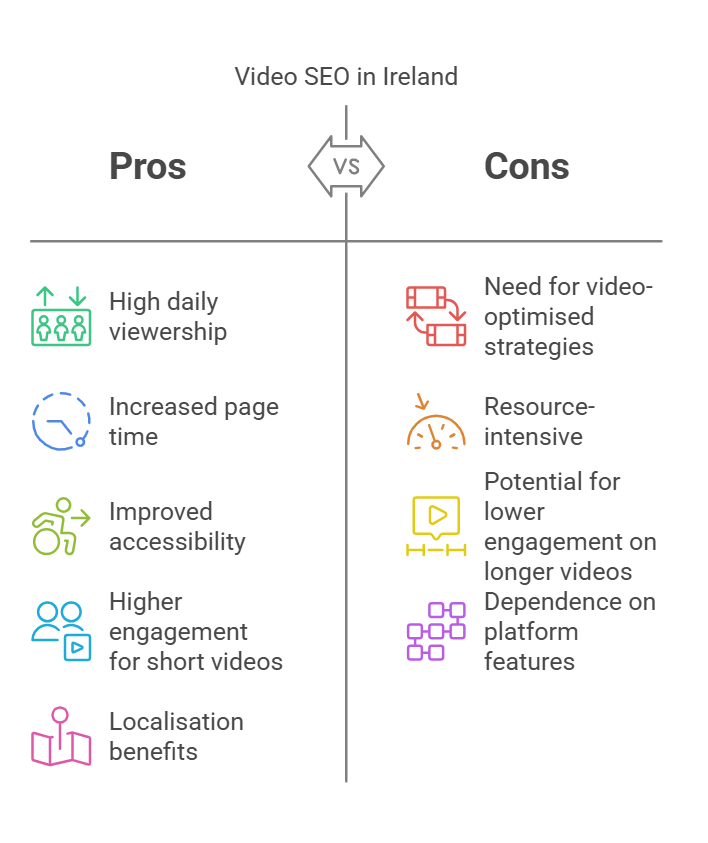
- Nearly 64% of Irish internet users watch online video content daily, indicating a growing need for video-optimised SEO strategies.
- Videos embedded within blog posts can increase the average time on the page by 2–3 minutes, signalling positive engagement metrics to search engines.
- Transcripts and closed captions improve accessibility and can boost video content’s organic search visibility by 10–15%.
- Short-form videos (under 60 seconds) shared on social channels often see 50% higher engagement rates than longer, more traditional formats.
- Leveraging YouTube’s localisation features (language settings and region tags) can help Irish-based content stand out in relevant SERPs.
Conclusion
These insights illuminate the dynamic nature of SEO—globally, within the EU, and most notably in Ireland. From sustaining competitive visibility across SERPs to capturing local searches via Gaelic keywords and voice-activated queries, success depends on a balanced approach. Technical performance, content strategy, and off-page tactics all play vital roles.
For Irish marketers, there’s a critical need to tailor strategies for local contexts while paying attention to evolving trends such as native-language queries and mobile-first indexing. It pays to combine data-driven insight, agile content tactics, and robust link-building in such a rapidly shifting environment. As you adapt to algorithm updates and user preferences, these statistics can guide meaningful refinements, helping your brand stand out in Ireland’s competitive digital landscape.
“Armed with these 50 stats, Irish marketers can pinpoint the areas that yield real results—be it mobile speed, local reviews, or snippet-ready content,” notes Ciaran Connolly. Embrace these findings to navigate SEO challenges in 2025 and beyond, continually aligning your strategies with user demands and search engine best practices.
